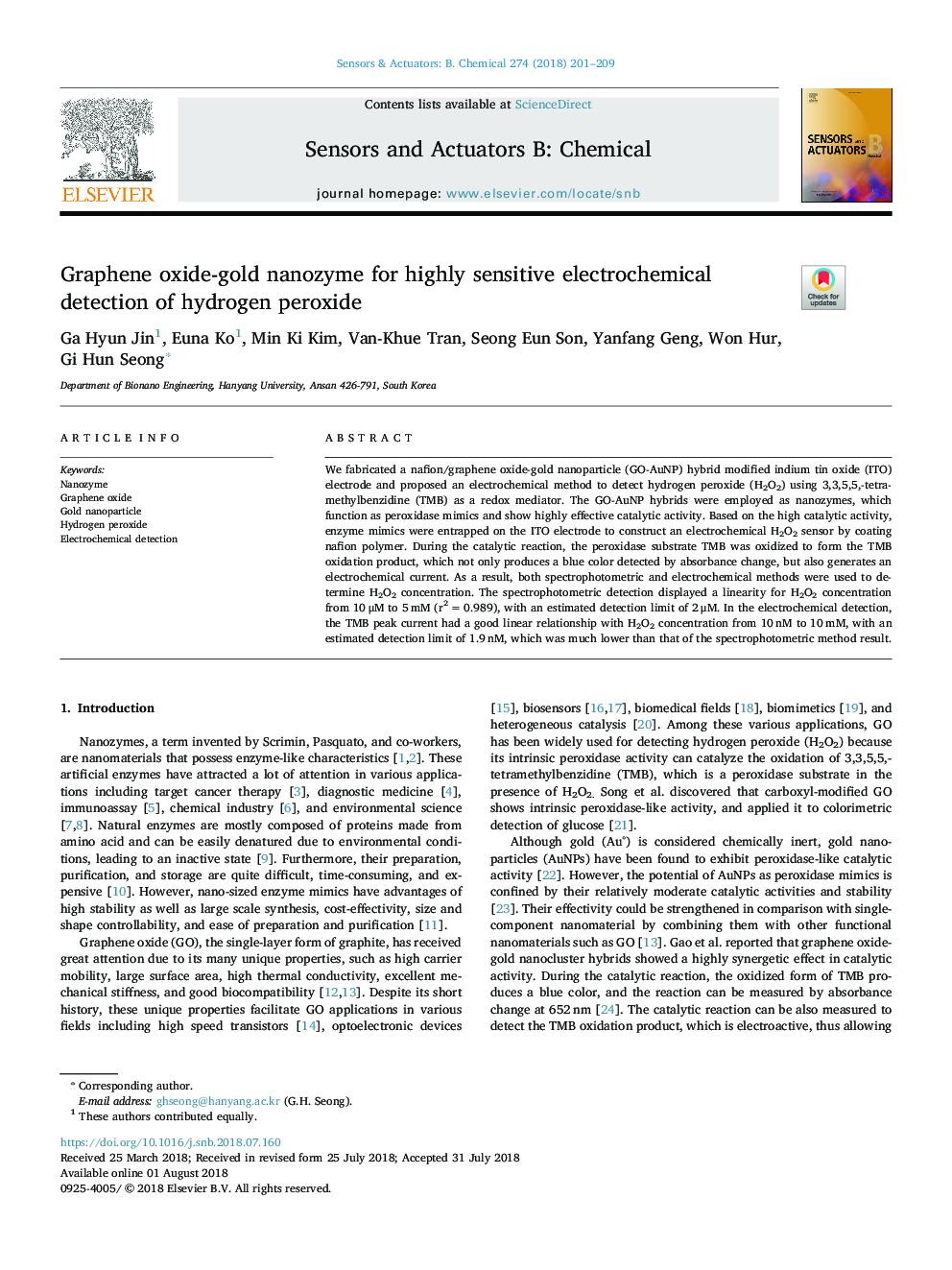| Article ID | Journal | Published Year | Pages | File Type |
|---|---|---|---|---|
| 7138656 | Sensors and Actuators B: Chemical | 2018 | 9 Pages |
Abstract
We fabricated a nafion/graphene oxide-gold nanoparticle (GO-AuNP) hybrid modified indium tin oxide (ITO) electrode and proposed an electrochemical method to detect hydrogen peroxide (H2O2) using 3,3,5,5,-tetramethylbenzidine (TMB) as a redox mediator. The GO-AuNP hybrids were employed as nanozymes, which function as peroxidase mimics and show highly effective catalytic activity. Based on the high catalytic activity, enzyme mimics were entrapped on the ITO electrode to construct an electrochemical H2O2 sensor by coating nafion polymer. During the catalytic reaction, the peroxidase substrate TMB was oxidized to form the TMB oxidation product, which not only produces a blue color detected by absorbance change, but also generates an electrochemical current. As a result, both spectrophotometric and electrochemical methods were used to determine H2O2 concentration. The spectrophotometric detection displayed a linearity for H2O2 concentration from 10âμM to 5âmM (r2â=â0.989), with an estimated detection limit of 2âμM. In the electrochemical detection, the TMB peak current had a good linear relationship with H2O2 concentration from 10ânM to 10âmM, with an estimated detection limit of 1.9ânM, which was much lower than that of the spectrophotometric method result.
Related Topics
Physical Sciences and Engineering
Chemistry
Analytical Chemistry
Authors
Ga Hyun Jin, Euna Ko, Min Ki Kim, Van-Khue Tran, Seong Eun Son, Yanfang Geng, Won Hur, Gi Hun Seong,
